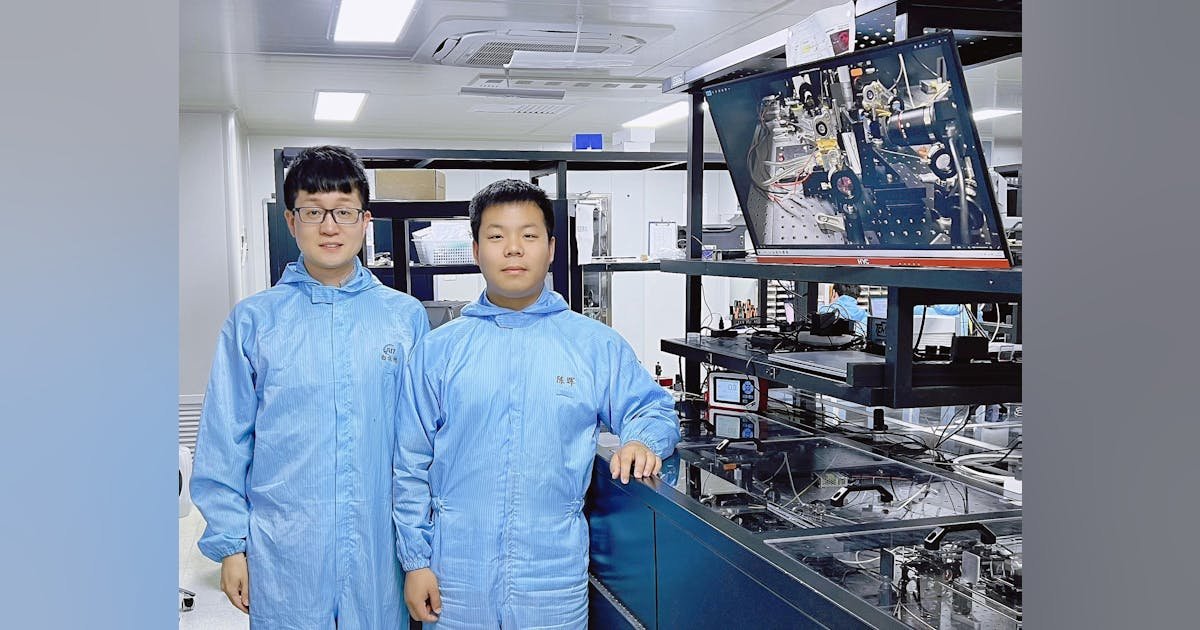On one hand, “diamond stands out with the highest thermal conductivity among known crystals, which not only promises a significant power improvement through efficient heat management but also minimizes thermal distortions at high power levels,” says Zhenxu Bai, a professor of optics, vice dean of the School of Electronics and Information Engineering, and deputy director of the Center for Advanced Laser Technology & Hebei Key Laboratory of Advanced Laser Technology and Equipment at Hebei University of Technology in China.
Over on the other hand, “as a Raman gain medium, diamond provides the largest Raman frequency shift coupled with a remarkably high gain coefficient,” Bai says. “These features enable precise wavelength tuning and high conversion efficiency, which are critical for advancing vortex beam technology. We found the prospect of harnessing diamond’s superior thermal and optical characteristics to enhance vortex beam performance particularly compelling—paving the way for innovative applications within fields ranging from optical manipulation and high-resolution imaging to quantum optics.”
Diamond-based Raman vortex beams
Diamond is a critical nonlinear medium that enables laser output through intense pumping to trigger nonlinear effects such as stimulated Raman scattering (SRS) and stimulated Brillouin scattering (SBS).
“When designing diamond-based lasers, it’s essential to ensure the diamond crystal receives sufficient pump intensity and the pump beam is precisely mode-matched to the laser cavity’s intrinsic modes,” explains Bai. “This alignment is particularly crucial for diamond Raman vortex lasers, where optimal gain extraction and a minimized lasing threshold depend on selecting the cavity mode that best matches the pump mode.”
The team’s experimental method builds upon conventional techniques in diamond lasers and vortex beam generation, but combines them in a new way. They integrate a simple vortex beam generation approach—off-axis pumping—with a traditional diamond Raman oscillator.
“By deliberately rotating the output mirror of a collimated diamond Raman oscillator at a precise angle, we enhanced the mode overlap between the higher-order Raman modes to control the oscillation process and generate vortex beams in both first-order and cascaded-order Raman,” says Bai. “Notably, with a 1-micron pump, our setup produced vortex beam outputs at 1.2 and 1.5 microns—wavelengths that align with excellent transmission windows. This marks the first reported case of achieving vortex rotation at these wavelengths with this method.”
One of the main challenges the team faced was to improve the efficiency of Raman-based vortex beam generation. Raman conversion demands high pump intensities and precise mode-matching conditions, and the inherent high-order transverse mode distribution tends to reduce laser power density and complicate the matching process.
“In our study, we manually adjusted the experimental parameters,” says Hui Chen, a Ph.D. candidate at Hebei University of Technology. “But we believe using precise control systems will optimize the conversion efficiency and pave the way for low-threshold, high-power vortex beam generation.”
What does this mean now for Raman lasers? “It’s a breakthrough for Raman vortex lasers,” Bai says. “Traditionally, vortex light in Raman laser research is generated using vortex light as the pump source. But our work demonstrates that a Gaussian beam pump can produce vortex rotational output directly via Raman oscillators. While our initial demonstration used diamond, we believe this method has potential to be extended to any Raman crystal. This approach not only simplifies the generation of vortex beams but also broadens the horizon for future developments in both Raman lasers and vortex beam technology.”

